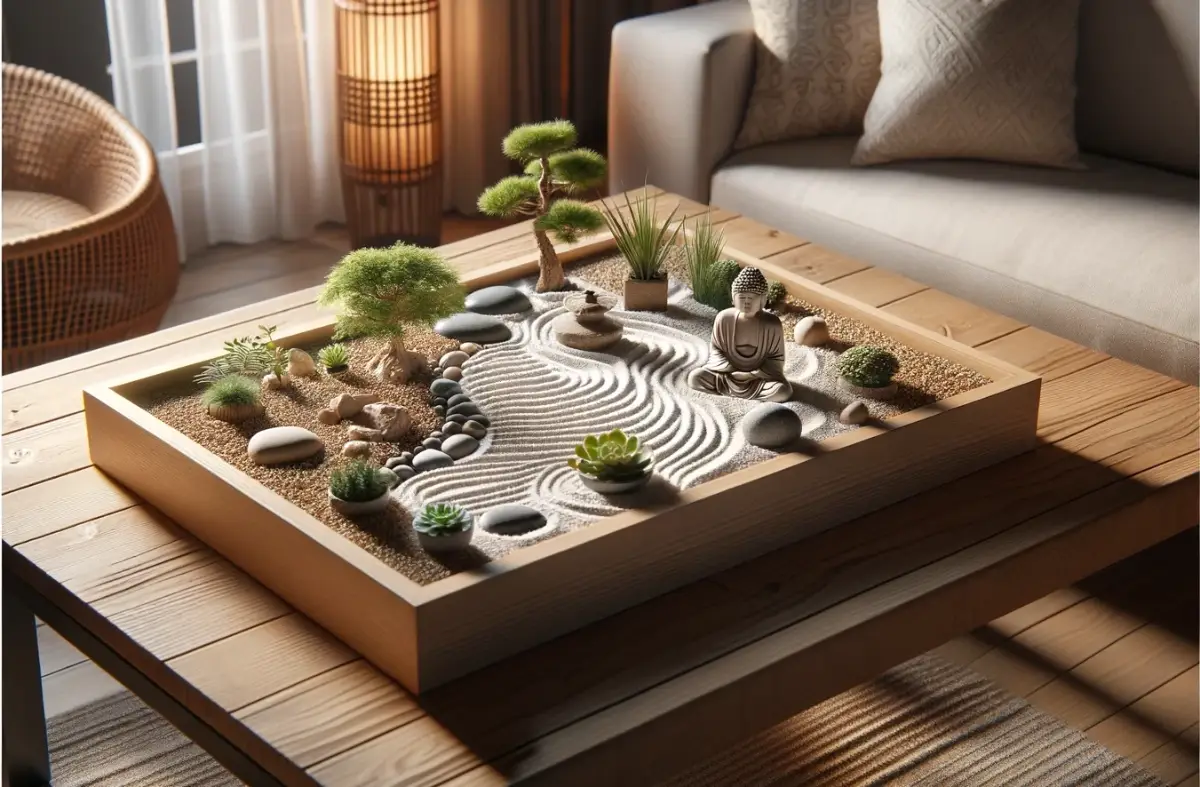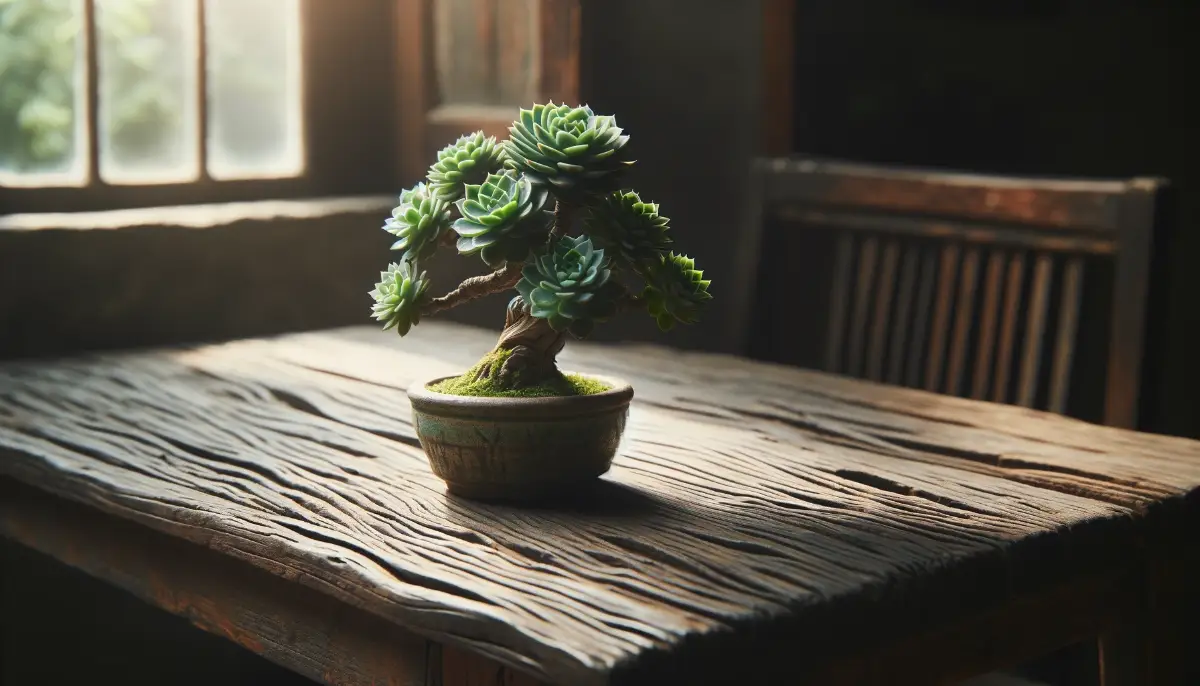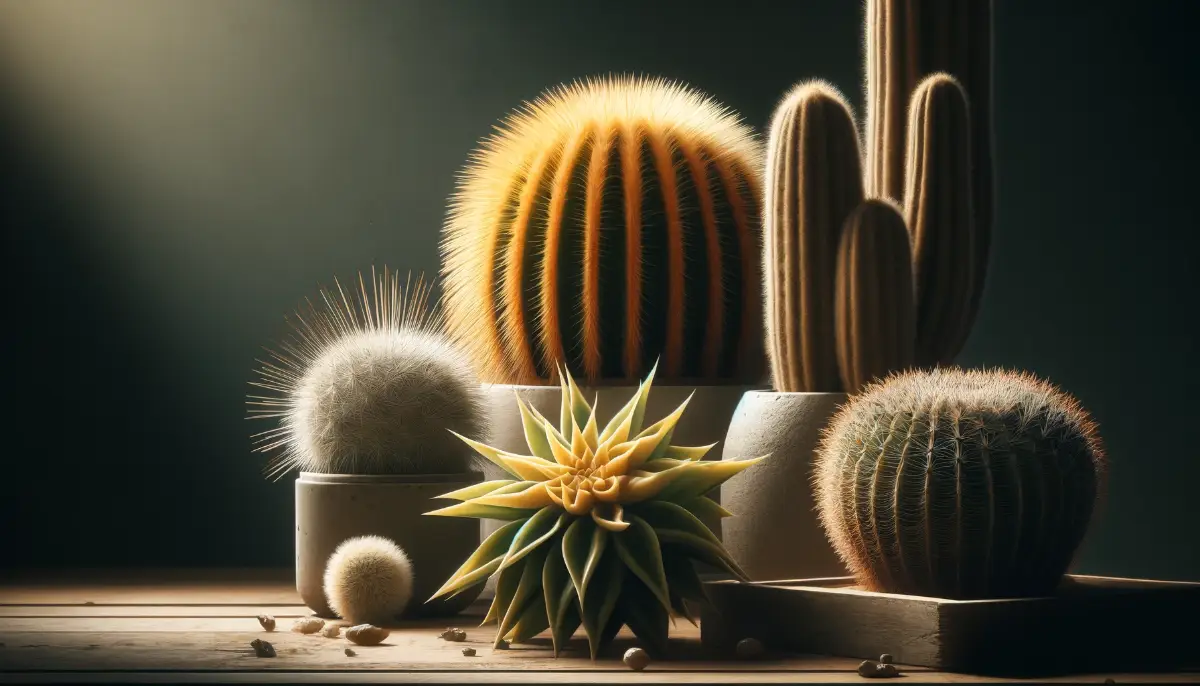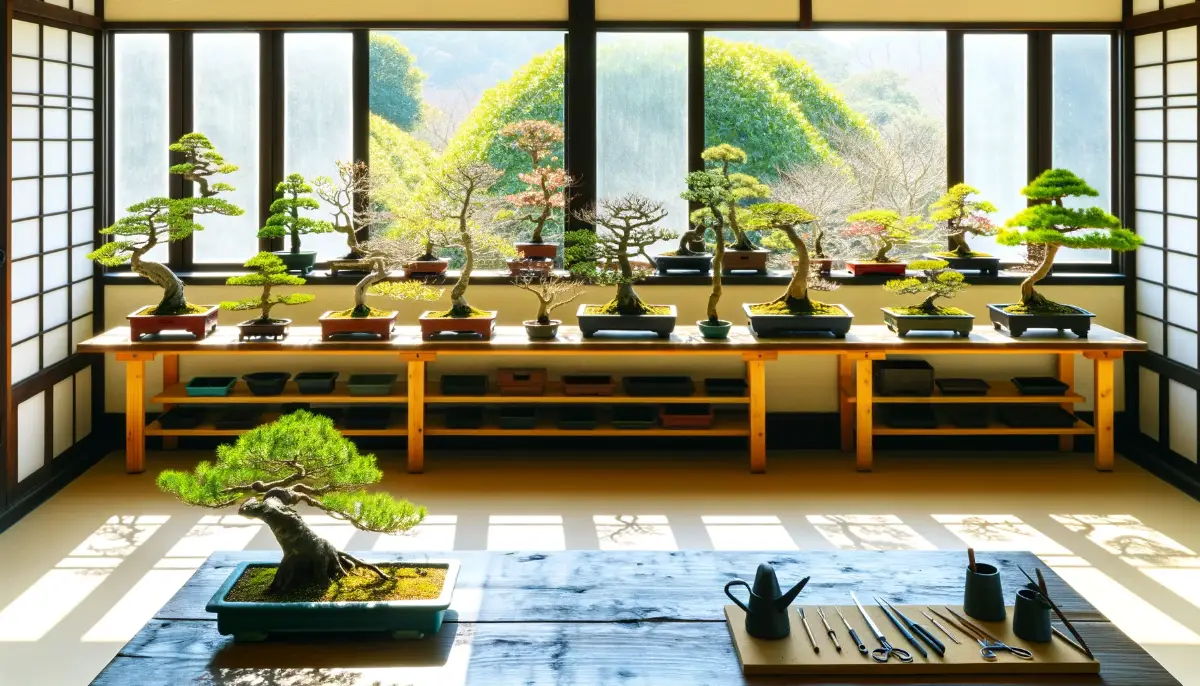Creating an indoor Zen organic garden is a perfect way to bring peace and tranquility into your home. By combining the principles of Zen with organic gardening practices, you can craft a serene oasis that not only enhances your living space but also provides a calming retreat from the stresses of everyday life.
- Understanding the basics of a Zen garden.
- Selecting the right plants for an indoor organic garden.
- Steps to design and maintain a tranquil space.
- Tips for creating a balanced and harmonious environment.
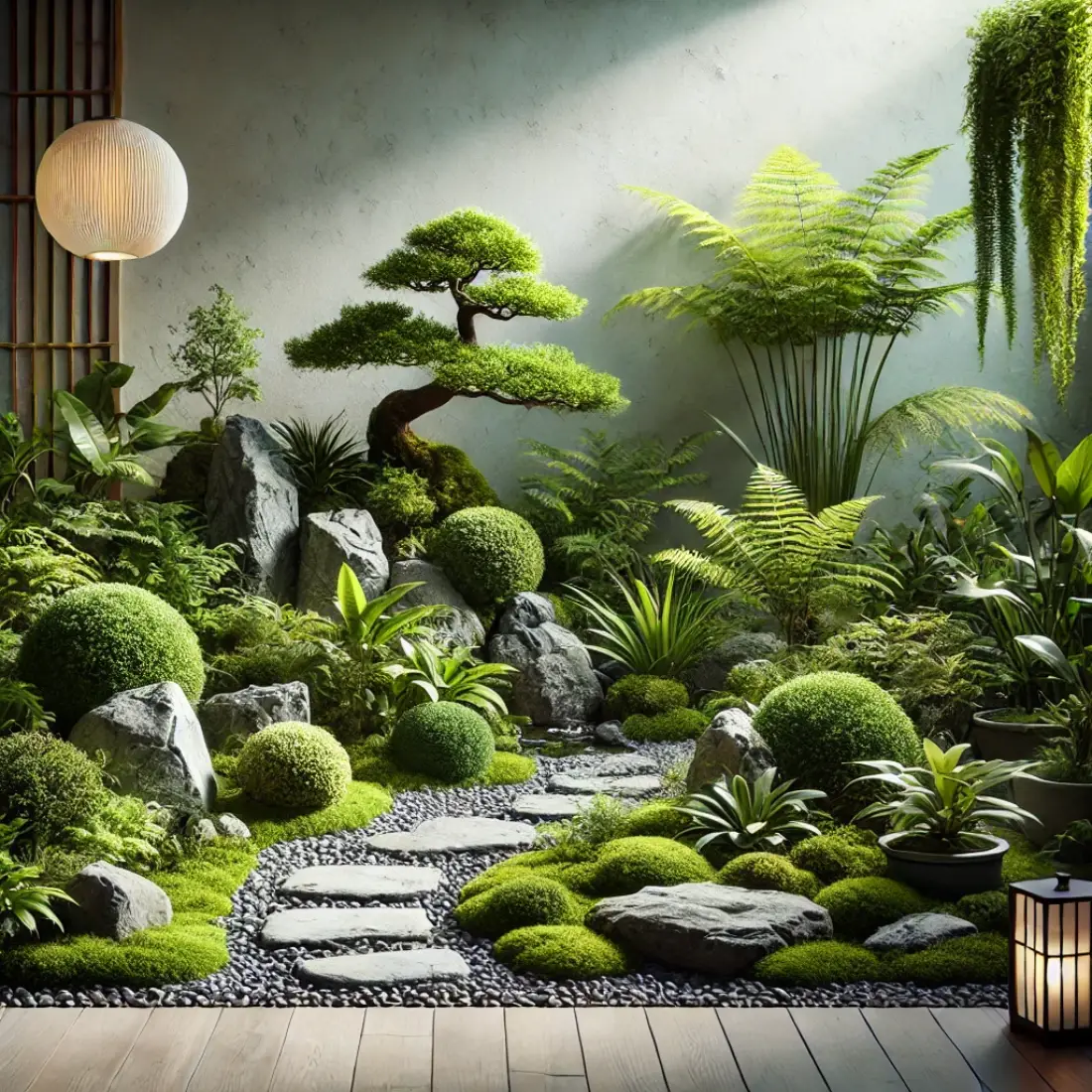
Understanding the Basics of an Indoor Zen Organic Garden
The Philosophy of Zen Gardens
Zen gardens, also known as karesansui, are designed to evoke a sense of peace, simplicity, and natural beauty. Originating from Japan, these gardens are often characterized by their minimalist design, using rocks, sand, and carefully selected plants to represent the essence of nature.
The core principles of Zen gardening emphasize balance, harmony, and mindfulness, encouraging a deep connection with the present moment.
Benefits of an Indoor Zen Organic Garden
An indoor Zen organic garden offers numerous benefits beyond its aesthetic appeal. These gardens are excellent for stress relief and mental well-being, providing a serene space for meditation and relaxation. They also improve air quality by incorporating plants that naturally filter and purify the air.
Additionally, an indoor Zen garden enhances home decor, adding a touch of natural beauty and tranquility to any living space.
Essential Elements of a Zen Garden
To create an authentic Zen garden, it is essential to include certain elements:
- Rocks and Sand: Rocks symbolize mountains or islands, while sand represents water or waves. The careful arrangement of these elements creates a meditative landscape.
- Water Features: Adding a small fountain or pond introduces the calming sound of water, enhancing the garden’s tranquil atmosphere.
- Minimalist Decor: Simple accessories such as bamboo, lanterns, and stone statues can enhance the garden’s aesthetic without overwhelming its simplicity.
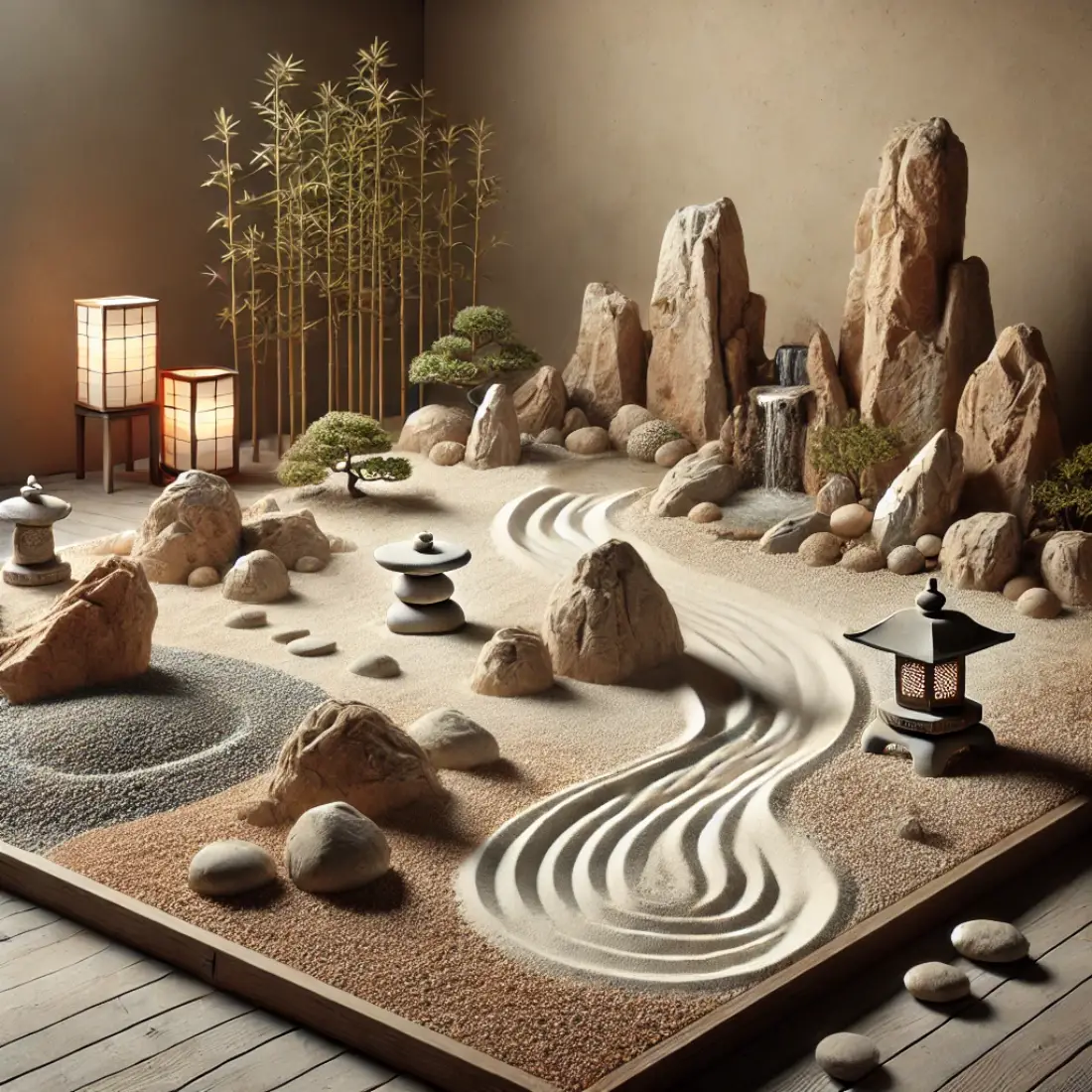
Choosing the Right Location
Selecting the perfect location for your indoor Zen garden is crucial. Aim for a spot with ample natural light, as many Zen garden plants thrive in well-lit environments. It’s also important to find a quiet and peaceful area in your home where you can fully enjoy the garden’s serene atmosphere.
Consider placing your garden in a room dedicated to relaxation or near a window that receives plenty of sunlight.
Best Plants for an Indoor Environment
Choosing the right plants for your indoor Zen organic garden is essential for creating a tranquil and harmonious space. Consider these popular options:
- Bonsai Trees: Symbolizing harmony and balance, bonsai trees are a classic choice for Zen gardens.
- Ferns: With their delicate fronds, ferns add a touch of softness and greenery.
- Bamboo: Known for its rapid growth and elegance, bamboo brings a minimalist appeal.
- Moss: Often used to create a lush, green ground cover, moss adds a sense of continuity and calm.
Steps to Build Your Indoor Zen Organic Garden
Preparing the Space
Before you begin creating your indoor Zen organic garden, it’s essential to prepare the space properly. Start by choosing a location that receives ample natural light, such as near a window or in a well-lit room.
Clear the area of any clutter to ensure a clean, serene environment.
If the space has hard flooring, consider adding a natural fiber rug or mat to create a soft, inviting base for your garden. Measure the area to determine the dimensions and plan accordingly to make the most of your available space.
Choosing the Right Soil and Containers
Selecting the right soil and containers is crucial for the health and growth of your plants. Opt for organic potting soil, which is free from synthetic chemicals and rich in nutrients. This will support the natural growth of your plants and maintain a healthy ecosystem.
Choose containers that complement the minimalist aesthetic of your Zen garden. Simple, neutral-colored pots made of ceramic, clay, or stone work well. Ensure that the containers have proper drainage holes to prevent waterlogging, which can harm plant roots.
Planting and Arranging Elements
With your space prepared and materials ready, follow these steps to plant and arrange your Zen garden:
- Layer the Soil: Fill your containers with organic potting soil, leaving about an inch of space from the top to prevent overflow when watering.
- Position the Rocks: Place larger rocks first, as these will serve as focal points. Arrange them asymmetrically for a natural look.
- Add the Sand: Spread a thin layer of sand around the rocks, creating flowing patterns with a rake to mimic rippling water.
- Plant the Greens: Carefully plant your selected greenery around the rocks and sand. Start with larger plants, placing them in the background or center, and fill in with smaller plants and ground cover.
- Install Water Features: If you’re incorporating a water feature, set it up according to the manufacturer’s instructions. Ensure it is securely placed and easily accessible for maintenance.
- Finish with Decor: Add minimalist decor elements like lanterns, bamboo sticks, or small statues to enhance the Zen aesthetic. Keep decorations simple to maintain a sense of tranquility.
Regular Watering and Feeding
Maintaining your Zen garden involves regular watering and feeding. Use a watering can with a gentle spray nozzle to avoid disturbing the sand and plants. Water your garden according to the needs of each plant, ensuring the soil remains moist but not waterlogged.
Organic fertilizers can be applied periodically to provide essential nutrients. Compost tea, fish emulsion, or diluted seaweed extract are excellent choices for organic feeding. Monitor your plants regularly for signs of overwatering or nutrient deficiencies.
Pruning and Grooming Plants
Keeping your Zen garden neat and tidy requires regular pruning and grooming of plants. Trim dead or yellowing leaves to encourage healthy growth and maintain the garden’s aesthetic appeal. Prune bonsai trees and other larger plants to preserve their shape and size.
Use clean, sharp scissors or pruning shears to make precise cuts. Regularly raking the sand to refresh the patterns can also enhance the garden’s meditative quality and keep it looking pristine.
Ensuring Adequate Light
Light is vital for the growth of your indoor Zen garden. Place your garden in a spot where it receives plenty of natural light, such as near a window. If natural light is insufficient, consider using grow lights to supplement.
Adjust the distance and duration of light exposure based on the specific needs of your plants. Remember, too much direct sunlight can scorch some plants, so diffuse harsh light with sheer curtains if necessary.
Balancing Humidity Levels
- Using a Humidifier: A humidifier can increase moisture levels in the air, benefiting plants that thrive in humid conditions.
- Misting: Regularly misting plants can help maintain humidity.
- Water Trays: Placing trays filled with water near your garden can also raise humidity levels as the water evaporates.
Seasonal Adjustments
Adjusting your garden care routine with the changing seasons ensures year-round health. During winter, reduce watering frequency as growth slows, and make sure plants are not exposed to cold drafts.
In summer, increase watering and feeding to accommodate faster growth and higher evaporation rates. Monitor light exposure throughout the year, adjusting positions as needed to ensure your garden receives adequate light regardless of the season.
Enhancing the Zen Atmosphere
Maintaining the tranquil atmosphere of your Zen garden is just as important as its physical health. Regularly clean and organize the garden space, removing any debris or clutter. Use natural light to highlight key elements, and consider adding soft artificial lighting for evening enjoyment.
Incorporate gentle sounds, such as a small water fountain or wind chimes, to enhance the serene environment. Periodically meditate or simply spend quiet moments in your garden to connect with its peaceful ambiance.
FAQs: Creating Your Own Zen Garden at Home
What are the best plants for an indoor Zen organic garden?
The best plants for an indoor Zen organic garden include bonsai trees, ferns, bamboo, moss, succulents, peace lilies, spider plants, and snake plants. These plants thrive indoors and contribute to the serene, minimalist aesthetic of a Zen garden.
How often should I water my Zen garden?
Watering frequency depends on the specific plants in your Zen garden. Generally, keep the soil consistently moist but not waterlogged. Succulents require less frequent watering, while ferns and peace lilies need more regular moisture. Always check the soil before watering to avoid overwatering.
Can I create a Zen garden in a small apartment?
Yes, you can create a Zen garden in a small apartment. Focus on using compact, low-maintenance plants and simple decor elements. Utilize vertical space with hanging plants or wall-mounted shelves to maximize the area. Even a small corner or tabletop can be transformed into a peaceful Zen garden.
Do I need special tools for maintaining a Zen garden?
Basic gardening tools like pruning shears, a small rake, a watering can, and gloves are usually sufficient for maintaining a Zen garden. Additional tools, such as bonsai trimming tools and misting bottles, can be helpful for specific plant care needs.
How can I incorporate a Zen garden into my existing home decor?
To seamlessly incorporate a Zen garden into your home decor, choose plants and decor elements that complement your existing style. Use neutral colors and natural materials like wood, stone, and ceramic. Position your Zen garden in a visible, quiet area to enhance the room’s tranquility.
What kind of lighting is best for an indoor Zen garden?
Natural light is ideal for an indoor Zen garden. Place your garden near a window with plenty of sunlight. If natural light is insufficient, use grow lights to supplement. Soft, warm artificial lighting can also enhance the garden’s ambiance, especially in the evening.
How do I keep my Zen garden pest-free?
To keep your Zen garden pest-free, regularly inspect your plants for signs of pests. Use natural pest control methods like neem oil, insecticidal soap, and companion planting with pest-repellent herbs. Maintaining proper humidity and avoiding overwatering also help prevent pest issues.
Can I add flowers to my Zen garden?
Yes, you can add flowers to your Zen garden for a touch of color and beauty. Choose simple, elegant flowers like orchids, lotus flowers, or camellias. Ensure they fit the overall minimalist aesthetic and are compatible with your garden’s light and humidity conditions.
How do I maintain the sand patterns in my Zen garden?
Maintaining sand patterns in your Zen garden involves regular raking. Use a small rake to create smooth, flowing lines that mimic water ripples. Rake the sand gently to avoid disturbing plants and rocks. Refresh the patterns periodically to keep the garden looking neat and meditative.
What are some ways to enhance the peaceful atmosphere of my Zen garden?
Enhance the peaceful atmosphere of your Zen garden by incorporating elements like water features (fountains or ponds), soft lighting, aromatherapy with essential oils, and gentle sounds like wind chimes or background music. Regularly clean and organize the garden space to maintain its tranquil ambiance.

